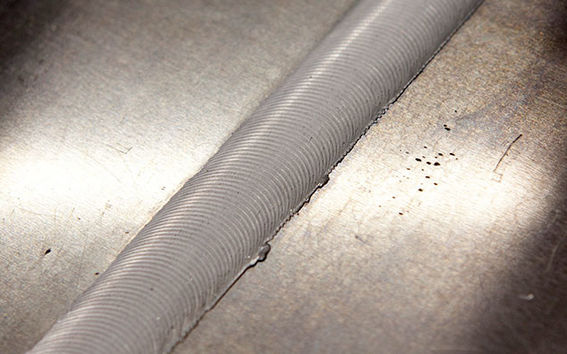Heat treatment improves the cracking resistance of nickel-based alloy weld metals

In his doctoral dissertation, Matias Ahonen, M.Sc. (tech.) studied the cracking behaviour of nickel-based alloy weld metals, used in dissimilar joints at nuclear power plants, in hydrogenated water.
The better the cracking resistance of welds is, the safer it is to use the plant. The structures must be tough and endure loads in all circumstances, even if the steel or weld contains a stress corrosion crack or some other defect, says Ahonen.
Hydrogen at grain boundaries
The doctoral dissertation involved a simulation of the circumstances at a nuclear power plant by keeping the test samples at a 300°C temperature and a 100 bar pressure for a month, after which the temperature was lowered to 55°C.
The subjects studied included four nickel-based alloy weld metals: Alloy 182 and 82 as well as Alloy 152 and 52. These welding consumables are commonly used in the joints between reactor pressure vessel nozzles and primary circuit pipe systems at nuclear power plants. The nozzles are made of ferritic pressure vessel steel and the primary circuit pipe systems of austenitic stainless steel.
According to the results, the traditional Alloy 182 that is still widely used is clearly more vulnerable to low temperature crack propagation in hydrogenated water than the newer Alloy 52 which contains more chromium.
- The impact of heat treatment was examined on weld metals 182 and 52. Exposure to a high temperature before starting the test improved the cracking resistance of both weld metals. Post-weld heat treatment also had a positive impact but only to a minor extent on cracking resistance, Ahonen reports.
The varying cracking resistance behaviour of different nickel-based alloy weld metals is assumed to mainly arise from different types of carbides which, in some cases, lower the cracking resistance. Carbides cause hydrogen to trapping the grain boundaries and affect the stretch distribution of grain boundaries, which, in turn, impacts the availability of hydrogen near the crack tip region.
However, carbides also have positive effects: they improve the creep resistance and strength of materials.
Minimised risks
This doctoral dissertation is the first in its field to compare the behaviour of pure weld metals manufactured for research purposes and materials equivalent to the welds used at plants. In the case of authentic plant welds, the welding consumables do not remain pure during welding but instead become mixed with the base material.
Stress corrosion cracking deriving from a low temperature crack propagation mechanism has not been observed at nuclear power plants. According to Ahonen, this mechanism is being studied, however, as the aim is to minimise the safety risks related to nuclear power production.
- Even though the mechanism presented in the dissertation has not been reported to have happened so far, this does not mean that it would be impossible. In addition to nuclear power production, the research provides additional information on the phenomena related to hydrogen-induced stress corrosion cracking to many other fields that involve constructing welded structures, says Ahonen.
The dissertation produced numeric data that can be utilised in modelling that is carried out through FEM calculation. FEM calculation is used widely in a variety of fields for assessing the properties of structures.
Matias Ahonen, M.Sc. (tech.) defended his dissertation on 18 September 2015 at the Aalto University School of Engineering. The title of his dissertation is 'Effect of microstructure on low temperature hydrogen-induced cracking behaviour of nickel-based alloy weld metals'.
The web address of the dissertation is: http://www.vtt.fi/inf/pdf/science/2015/S105.pdf
Contact information for the doctoral candidate:
Matias Ahonen, tel. +358 40 1508774, [email protected]
- Published:
- Updated:
Read more news

Get to know us: Associate Professor Maria Sammalkorpi
Sammalkorpi received her doctorate from Helsinki University of Technology 2004. After her defence, she has worked as a researcher at the Universities of Princeton, Yale and Aalto.
Aalto computer scientists in ICML 2024
Computer scientists in ICML 2024
Getting bacteria into line
Physicists use magnetic fields to manipulate bacterial behaviour